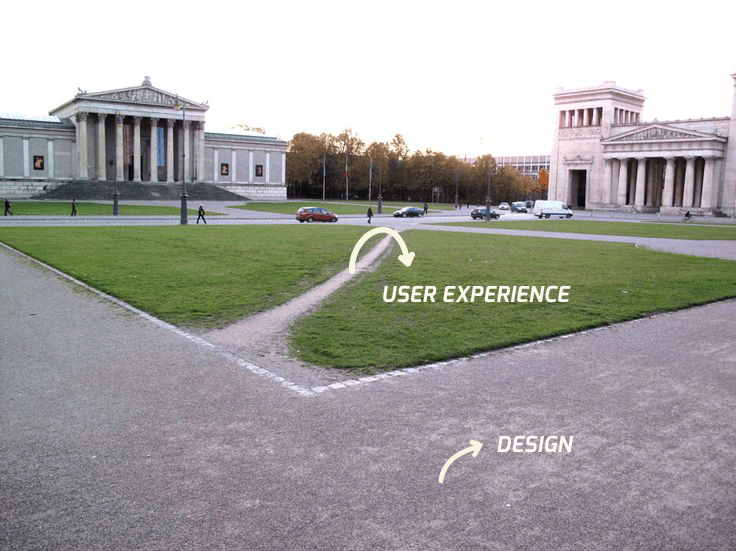Easy to use

Enjoy your life and relationships now!

in the palm of your hand
Scientifically proven

applied from brain research
Effective results

based on intrinsic motivation
A free tool

making life rewarding
Why?
A consistent problem in business and relationships is how is dealt with problems
For example. People in more service-oriented functions, some managers or couples tend to demonstrate continuous goodwill, neglecting to address problems fettering at the bottom and finally eating up the positive culture of companies or relationships from the inside out. They systematically transgress their boundaries as an act of service, keep in their resentments and finally get discontented, starting passive-aggressive or manipulative games or feel betrayed.
Linked to this dynamic is another, which is more of a general one: people are mostly looking to the management as responsible for all the problems… or the other way around. Or a couple nitpicking each other’s weak points or shortcomings. But if you ask them what they need to solve it or what would change if it was okay, they have no clue. There is a habit of shooting or lecturing the other, which prohibits a trusting environment that constructs real solutions and satisfaction.
Good will0%
Dealing with problems0%
Nitpicking0%
Shooting games0%
So, with a simple, yet effective way to deal with this, your mission would become easier and your success rate even higher.
What?
A free & simple tool
It is a simple frame that can be used for all situations, although some exercise is needed to apply it gracefully. So, while you could freewheel in a sensible way, the Fair Play anchor makes sure you get into an equally rewarding, conflict-free conversation, providing the results you need without losing yourself or the other. Thus, no need to restrain yourself or your conversation partner, as long as you make use of the Fair Play game. Noticing how effective and rewarding it works, your environment will soon Fair Play as well…

reasons why it is so effective
Not rational
The way people behave and the games they play are not rational and are determined by complex processes. It would help if you know their story, but even then, it is hard to change irrational behavior by rational rules in a given context.
More efficient
Training new behavior could take weeks or months, provided there is continuous sensorial feedback until it becomes a habit. Training new habits to optimize a solid structure is a static process that consumes a lot of energy and time, hard to apply to a changing context. Nature, though, is survival of the fittest, which means a dynamic process of easily adapting. If you need comfortable quick actions for changing conditions, requirements, equipment, information or irrational behavior… you have to deal with it differently.
Always available
Fair Play consists of no more than 4 symbols, which could be easily scrabbled in the palm of your hand as a reminder. Asked to solve a problem, your hand will then guide you through the order of the conversation in order to peacefully come to a workable solution for all parties. Soon though, you will switch back and forward between the symbols to steer all your conversations in a constructive Fair Play game.
No destructive feedback
In research was found that brains only take feedback before and while they are learning a new task, mostly by imitating a model, such as a more experienced colleague or friend. Afterward, all feedback is lost or works negatively, unless it is on request of the participant mastering a task in a safe context, such as in video games. Thus, unless feedback is task guidelines given in advance ór a non-judgmental measurement of honestly comparing expenditures to results (progress), it always works destructively!
Empowering
People like to help, but without uploading too much trouble or responsibility for themselves. Otherwise, the workload will skew, boundaries will be transgressed and resentment sets in. If you could help people reach their potential by guiding them into solution-oriented thinking, finding their own possibilities to adapt, keeping up with their boundaries –and emotions-, wouldn’t that be more rewarding?
Real contact
In relationships, we’d like to feel understood. It makes us feel valuable, our work noteworthy, it provides us with an identity and belonging. If we could take care of another, without being sucked into a game or triangulated between other parties, while still getting our results or needs met, we create a chance for real connection and exchange.
No judgment
By training a new rule, you could question if this rule is indeed better, more ethical, more logical, more efficient, more adapted…? Are you really sure? For who? And in what context?
Workable solutions
Imposing new rules or behavior doesn't guarantee that this works or contributes to the required results or satisfaction of the relationship or happy life. Are you sure you know the real cause or game dynamics? A creative interaction process starting from solutions that worked already does! Moreover, my recent research found out that the qEEG of people normalizes after they got an aversive addictive stimulus from the past. We thus need to trick the brain with healthy similar behavior.
Social contract
New rules or procedures that are externally pressured are hard to follow, even if we’d like to comply. Chances are our old habits, daily worries and scatter take over or we irrationally rebel or resist since energy is given to own priorities. If solutions are brought up by people themselves, however, we are not only assured they stem from their own experience and thus possible for them to keep up with, but thought over and spoken out loud this extends to a social contract people intent to keep… It becomes an intrinsic motivation under the influence of the psychological mechanism of cognitive dissonance.
How?
Let’s start! First the elements…

1. Mood
What spoils the mood?
You can tell that one part of this face is angry, the other is anxious. This is the very basic of all negative emotions. Whatever people come to you with, or the other way around, whatever you need to complain about or want to change, is always A SITUATION (not a person, even if it seems the cause) that is making you feel bad or gives you pain. Bad as in ANGRY (frustrated, unsatisfied, hurt, disrespected, not valued, disappointed, …) or ANXIOUS (worried, fearful, unsure, unsafe, …)

2. Wish
What do you wish for?
If you or somebody else feel bad about a situation, you and the other one need to know what will give good feelings again. We don’t want to stay troubled or be stuck in bad situations, so all people in the situation have to know what makes the situation back all right.

3. Past
Did this happen already in the past?
You may think that you know how to reach your ideal situation, but guess what: whatever people's actions, most of them are out of your sight or awareness and irrational. So, we don’t even have a clue about the real motivations behind. Thus, it wouldn’t be wise to set out a course of rational To Do’s, without first consulting the past about what really works…

4. Bag
What do you need then?
With all helpful elements found in working situations, you all are able to gather the necessary requirements for creative problem solving. But don’t be fooled. To make your communication into a real workable agreement, you’ll have to loop this frame a couple of times and maybe even switch sides…

Now that you understand the 4 symbols, you may as well write them down in the palm of your hand as a reminder. We’ll put them to use in the following 8 cases:
A complaint about someone else
A complaint about you
You have a complaint
You have bad news
You have an objection
You want to stop a destructive habit
You want to comply to a new procedure or strategy
You want to have a happy life and feel good
Try it!
Examples of applications
Validate bad feelings and pain, others ánd yours
A complaint about someone else
A complaint about you
You have a complaint
You have bad news
You have an objection
You want to stop a destructive habit
You want to comply to a new procedure or strategy
You want to have a happy life and feel good
Reorganize the focus to the desired goal
Question to others
-
- “Then what situation would be satisfying?”
- “What would be the ideal situation?”
- “How may we make the situation more supportive or comfortable for you?”
- “If you could make a wish, how would you notice it worked? What would be different?”
- …
[experiences translated to actions or countable measures]
…
Statements from you
-
- “I would like the situation to be…”
- “Ideal would be…”
- “Requirements are…”
- …
Statements from you
-
- “I would like the situation to be…”
- “Ideal would be…”
- “Requirements are…”
- …
Question to others
-
- “Then what situation would be satisfying?”
- “What would be the ideal situation?”
- “How may we make the situation more supportive or comfortable to you?”
- “If you could make a wish, how would you notice it worked? What would be different?”
- …
[experiences translated to actions or countable measures]
…
Look for solutions in the past
In this, you are always inviting others in the creative solution-focused process. Even if it is your complaint, you want them to think about the solutions, since you need their cooperation. You could make an exception when you are looking for healthy habits and happy life for yourself, but with cooperation from your environment, your success rate will be higher. So, in this case, first, do the exercise alone, then with significant others.
A complaint about someone else
A complaint about you
You have a complaint
You have bad news
You have an objection
You want to stop a destructive habit
You want to comply to a new procedure or strategy
You want to have a happy life and feel good
Install the promotors in the actual situation...
After having found what really promotes solutions for cooperation, comfort, and results, you need to install the requirements by taking action.
This action can be everything! It could even mean thinking differently about a situation or let the situation pass and relax. Important in installing promotors is:
1. It has proven it worked in this or a similar situation
2. It is a solution to a real need, not a compensation behavior or unhealthy coping to a situation that ignores your real values. It is therefore important to notice and validate bad feelings, every time! Yours and someone else’s…
And final...
Practise
Exercising with people you are less involved with is easier. So you may start with that.
Don’t give up after the first time; the first failure. It is a skill that needs mastering. If you manage to do the first finger, you’ve won already. Just try to involve the next finger in every conversation…
Switch sides
With switch sides, I want to point out that you or others may object as well and state one’s bad feelings (validate!) and ideal situation. Situations can be combined and rewind to the past to find ‘case studies’.
Back and forth
In the process, you start with following this order, but soon, you’ll need to go back and forth to validate bad feelings, to clarify or adjust situations and actions or behavior wishes and to rewind several times for creative solution processing. But always end with clear To Do’s and being grateful for the rewarding process. (You may want to put a rose under your thumb… ![]() )
)
Other applications
I even recommend using this frame for strategic presentations and brainstorming sessions with interactive cooperation for the best solutions supported by all.
Optimize and innovate
From out of the found working solutions, you are then able to look around for more optimized forms of solutions or experiment with new creations made out of workable solutions…
Users will take the elephant trail!
So as a designer, you want to know the desire lines...



